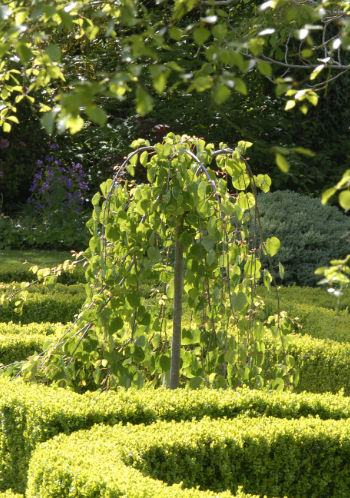Stepping through the small, arched doorway that marks the only entrance is like entering a different world. The walls and surrounding woodland provide shelter and give a sense of security, serenity and seclusion.
The garden is divided by internal walls into 3 areas all approximately one acre in size. Woodfall has been extensively reclaimed from a derelict state by the 2 previous owners and this work is being continued by the present occupants.
Woodfall has many interesting features which include:
•A Rose Garden with scented old English shrub roses, together with more than 20 climbing and rambling roses on walls and through trees
• Mixed borders, in which shrubs and perennials provide year round colour and interest
• A working kitchen garden, with many types of vegetable grown annually for home consumption, 20 types of fruit, including local apple and pear varieties, and a box-edged herb garden
• An extensive box parterre interplanted with perennials and set in the shade of a magnificent foxglove tree (Paulownia tomentosa)
• A Grass Garden, in which herbaceous perennials accentuate the graceful forms of cultivated grasses
• A Winter Garden, filled with winter and spring bulbs, winter-flowering or berrying shrubs, and plants with bright stem colours such as various types of Cornus
• A small fernery in the remains of the former summer house
• A Woodland Garden, which looks at its best in Spring
• Climbers adorn the walls. These include 12 types of Virginia Creeper, many climbing roses and a variety of ivies
•Wonderful rhododendrons, magnolias, hydrangeas, acers, primulas etc. are interspersed with other plants throughout the garden
• Horticultural Archaeology - the remains of old buildings and gardening artifacts provide fascinating clues as to how the 19th Century kitchen garden operated.
The gardens have a natural balance between “friend” and “foe”. Frogs, toads, newts and even slow-worms have been seen and are helped by leaving log piles and undisturbed damp corners. Plants such as Tagetes, Digitalis & Buddleias, and herbs like borage, encourage several types of bee and hoverflies for pollination and pest reduction.
Many native and migrant birds nest in the gardens or the surrounding woodlands, while the prolific windfall fruits help to feed both birds and butterflies.

